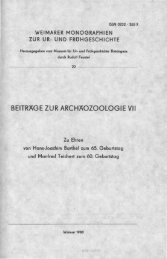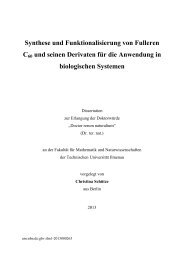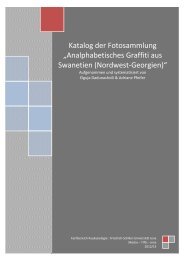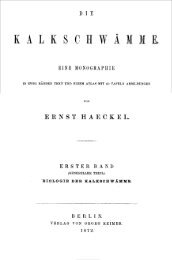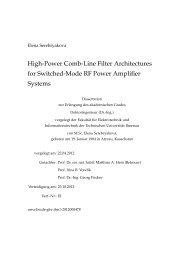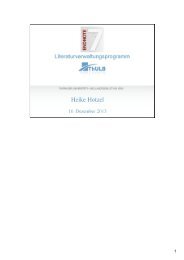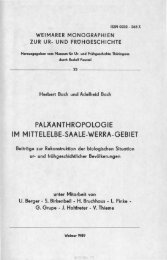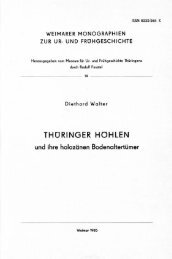Dissertation
Dissertation
Dissertation
Create successful ePaper yourself
Turn your PDF publications into a flip-book with our unique Google optimized e-Paper software.
|6 Experimental Section|<br />
Spectroelectrochemistry:<br />
Spectroelectrochemical experiments were carried out using a HEKA Elektronik Potentiostat/<br />
Galvanostat PG284 and a SPECORD S600 Analytic Jena spectrophotometer. The measurements<br />
were performed in a homemade three neck cell (d = 0.3 cm) with a platinum gauze (working<br />
electrode), a platinum wire (counter electrode) versus a silver wire (pseudo reference electrode)<br />
under argon atmosphere. Tetrabutylammonium hexaflourophosphate (c (T BAP F6 ) = 0.2 M) was<br />
used as supporting electrolyte.<br />
Femtosecond transient absorption spectroscopy:<br />
Femtosecond transient absorption studies were performed with an amplified Ti/sapphire laser<br />
system (Model CPA 2101, Clark-MXR Inc. - output: 775 nm, 1 kHz and 150 fs pulse width) in<br />
the TAPPS - Transient Absorption Pump / Probe System - Helios from Ultrafast Systems. That is<br />
referred to as a two-beam setup where the pump pulse of 480 nm and 200 nJ, generated out of a<br />
NOPA - noncollinear optical parametrical amplifier, Clark MRX Inc. - is used as excitation source<br />
for transient species and the delay of the probe pulse is exactly controlled by an optical delay rail<br />
of 3.3 ns. As probe beam (white light continuum), a small fraction of 775 nm pulses stemming<br />
from the CPA laser system was focused by a 50 mm lens into a 3 mm thick sapphire disc. Finally,<br />
the changes in optical density (∆A) are measured against the wavelength in both visible and nearinfrared<br />
regions. The transient spectra were recorded in a 2 mm quartz glass cuvette.<br />
Nanosecond transient absorption spectroscopy:<br />
For nanosecond transient absorption experiments the samples were excited with the output of the<br />
second harmonic (532 nm) coming from a Nd:YAG laser. Moreover, pulse widths of less than 5 ns<br />
with energies of up to 7 mJ were selected. The optical detection was based on a pulsed Xenon lamp,<br />
a monochromator, a photomultiplier tube or a fast silicon photodiode with a 1 GHz amplification<br />
and a 500 MHz digital oscilloscope. The laser power of every laser pulse was registered using a<br />
bypath with a fast silicon photodiode. The experiments were performed in a 5⋅10 mm quartz glass<br />
cuvette.<br />
|194|



